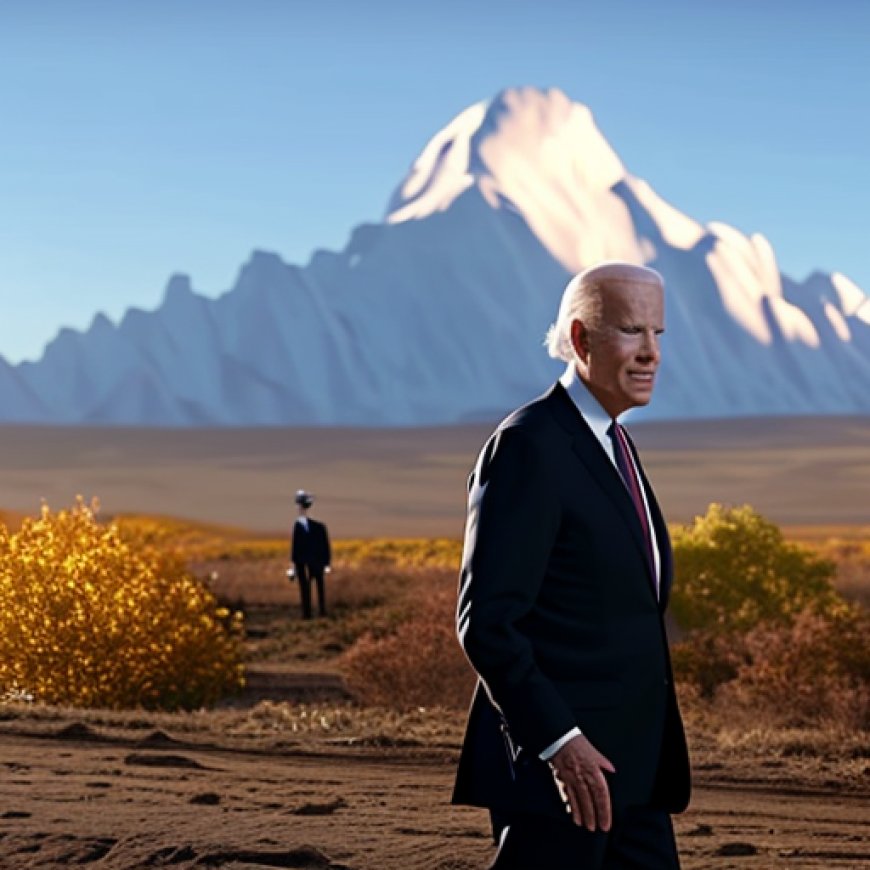Fact check: Biden compares lost farmland to ‘the size of Minnesota, North and South Dakota combined’
Fact check: Biden compares lost farmland to 'the size of Minnesota, North and South Dakota combined' WRAL News


President Biden’s Visit to Minnesota Farmland Highlights Economic Policies for Rural America
President Joe Biden recently visited Minnesota farmland and touted how his economic policies are bolstering rural America.
Biden said fewer Americans are able to keep “the farm in the family,” and, to emphasize his point, offered figures about the loss of agricultural land in recent decades.
“Over the past four decades, we’ve lost over 400,000 farms in America (and) over 140 million acres of farmland,” Biden said Nov. 1. “And that’s an area roughly equal to the size of Minnesota, North and South Dakota combined.”
Fact-checking the Numbers
A reader heard Biden’s statistics and asked for a fact-check. We found that the numbers are accurate, at least by one standard measure. According to data from the U.S. Department of Agriculture’s National Agricultural Statistics Service, from 1982 to 2022, the number of U.S. farm operations fell from 2,406,550 to 2,002,700. That’s a decrease of 403,850 farms.
Over the same period, farm acreage fell from 1.027 billion acres to 893.4 million acres. That’s a decline of 134.4 million acres — less than what Biden said.
When we examined historical farm data, we found that the sharpest decline in farm operations occurred from the 1930s to the 1970s. During the period Biden cited, the number of farms has fallen, but more slowly.
Comparison with Minnesota and the Dakotas
To test Biden’s comparison with Minnesota and the Dakotas, we calculated the land area of all three states. The three states’ total land area is 137 million acres, close to the farm acreage lost between 1982 and 2022.
Multiple Data Sources and Definitions
There is more than one source of data for measuring U.S. agriculture. Data from the U.S. Census Bureau, for instance, found smaller numbers for farms and acreage in 1982: 2.24 million farms and 986 million acres. This would make the decline of each of these metrics less steep than Biden indicated in his speech.
Also, there’s no consensus definition for “farm.” “The term ‘farm’ is fairly fluid,” said Claire Strom, a historian who specializes in agriculture at Rollins College. “Does it include hobby farms? Market gardens? Not-for-profit organizations?”
Understanding the Numbers: The Changing Landscape of American Agriculture
Experts cautioned that numbers alone don’t tell the full story. Nostalgia for the old-fashioned family farm is common, but experts said the inevitable march of technology and economics has pushed smaller operations aside and left fewer, larger operations.
“Farms probably will get larger and become fewer in number in the years ahead. This is not necessarily a problem,” said R. Douglas Hurt, a Purdue University history professor who specializes in agriculture.
According to the Agriculture Department, production of food and other agricultural products nearly tripled between 1948 and 2017. That means that even as the land and labor used in farming declined, “innovations in animal and crop genetics, chemicals, equipment and farm organization have enabled continuing growth in farm output,” the department said.
And as fewer people are needed to produce the same number of farm goods, people have left rural areas. Population loss has gone hand in hand with technological advances that meant fewer people could produce the same, or larger, crops.
“Young people leave the farm for better jobs and more money,” Hurt said. “They have been doing this since the 1870s.”
As farming becomes more efficient, more food can be made from less land, Strom said. “I don’t know if I’d call that benign, as it requires greater inputs of chemicals and technology,” Strom said. “However, I don’t see it as a result of greater outsourcing of food production or any deliberate effort to undermine the U.S. farmer.”
Sustainable Development Goals (SDGs)
The changes in American agriculture align with several Sustainable Development Goals (SDGs) set by the United Nations. These goals include:
- Goal 2: Zero Hunger – Ensuring access to safe, nutritious, and sufficient food for all.
- Goal 8: Decent Work and Economic Growth – Promoting inclusive and sustainable economic growth, employment, and decent work for all.
- Goal 9: Industry, Innovation, and Infrastructure – Building resilient infrastructure, promoting sustainable industrialization, and fostering innovation.
- Goal 11: Sustainable Cities and Communities – Making cities and human settlements inclusive, safe, resilient, and sustainable.
- Goal 12: Responsible Consumption and Production – Ensuring sustainable consumption and production patterns.
PolitiFact Rating: Mostly True
Biden said, “Over the past four decades, we’ve lost over 400,000 farms in America (and) over 140 million acres of farmland. And that’s an area roughly equal to the size of Minnesota, North and South Dakota combined.”
His numbers roughly track with legitimate data sources for farms, farmland, and those three states. However, the definition of “farm” can be murky, and the lost farmland masks improvements in efficiency that meant more goods could be farmed from less land by fewer people.
We rate the statement Mostly True.

Join us, as fellow seekers of change, on a transformative journey at https://sdgtalks.ai/welcome, where you can become a member and actively contribute to shaping a brighter future.







